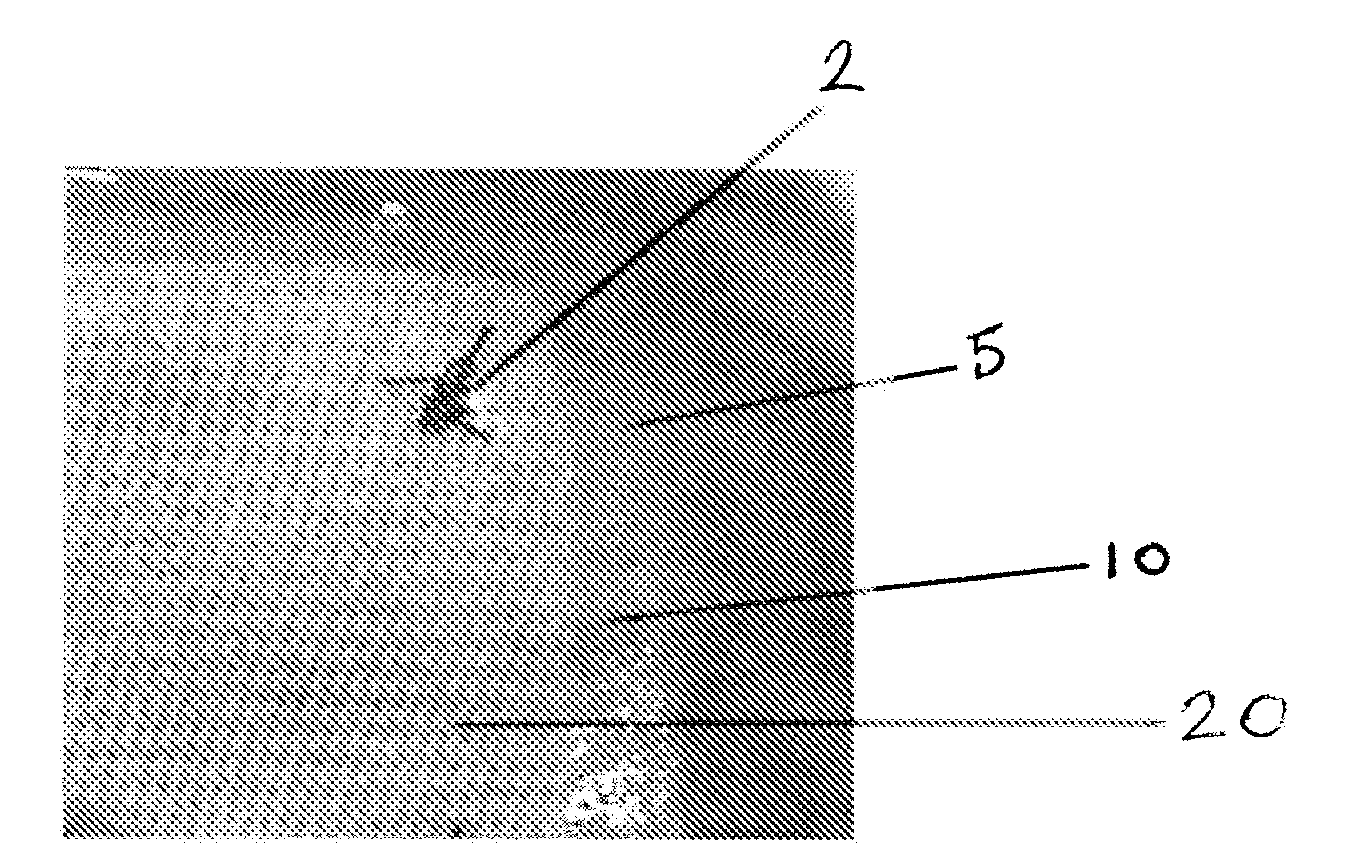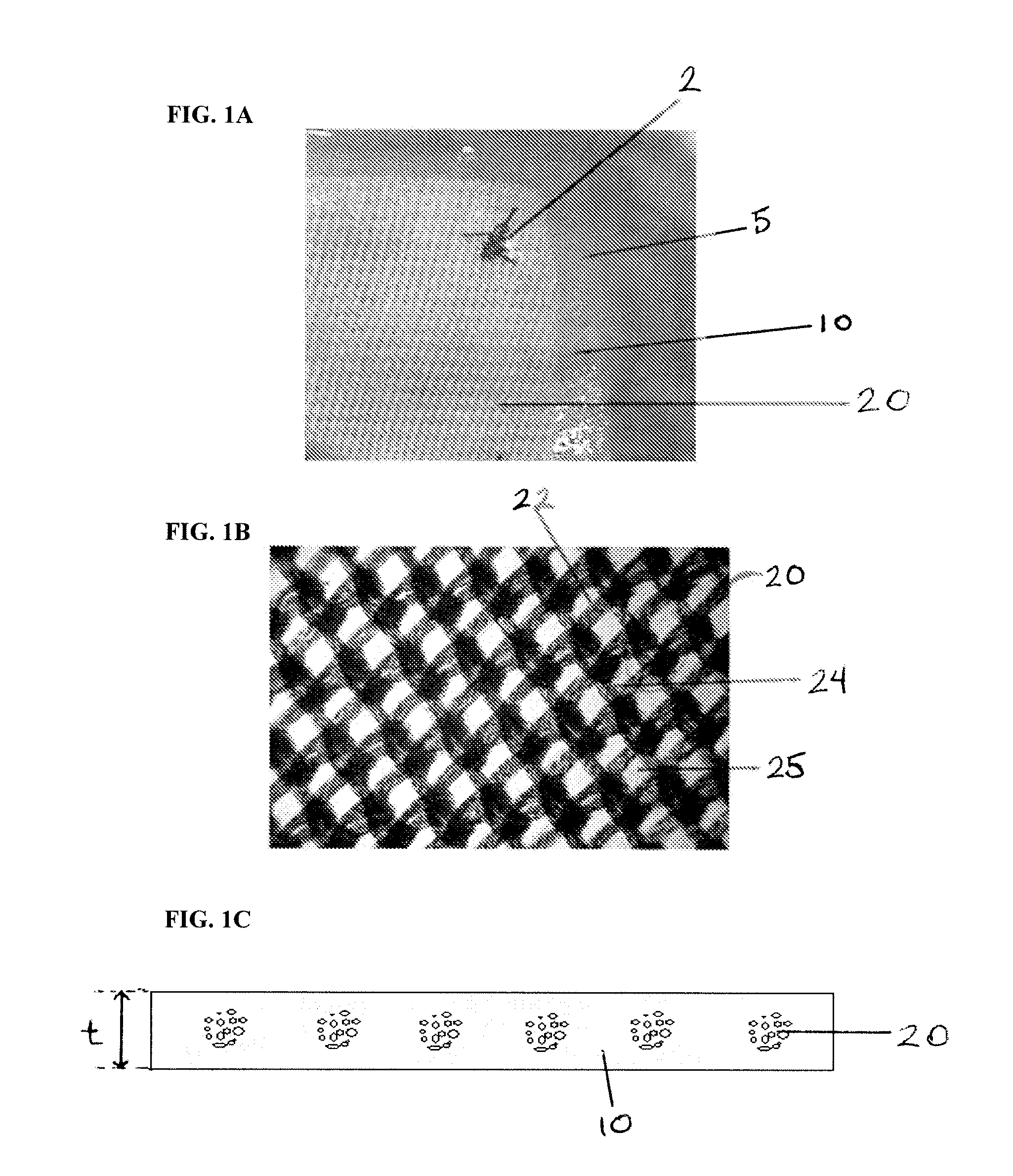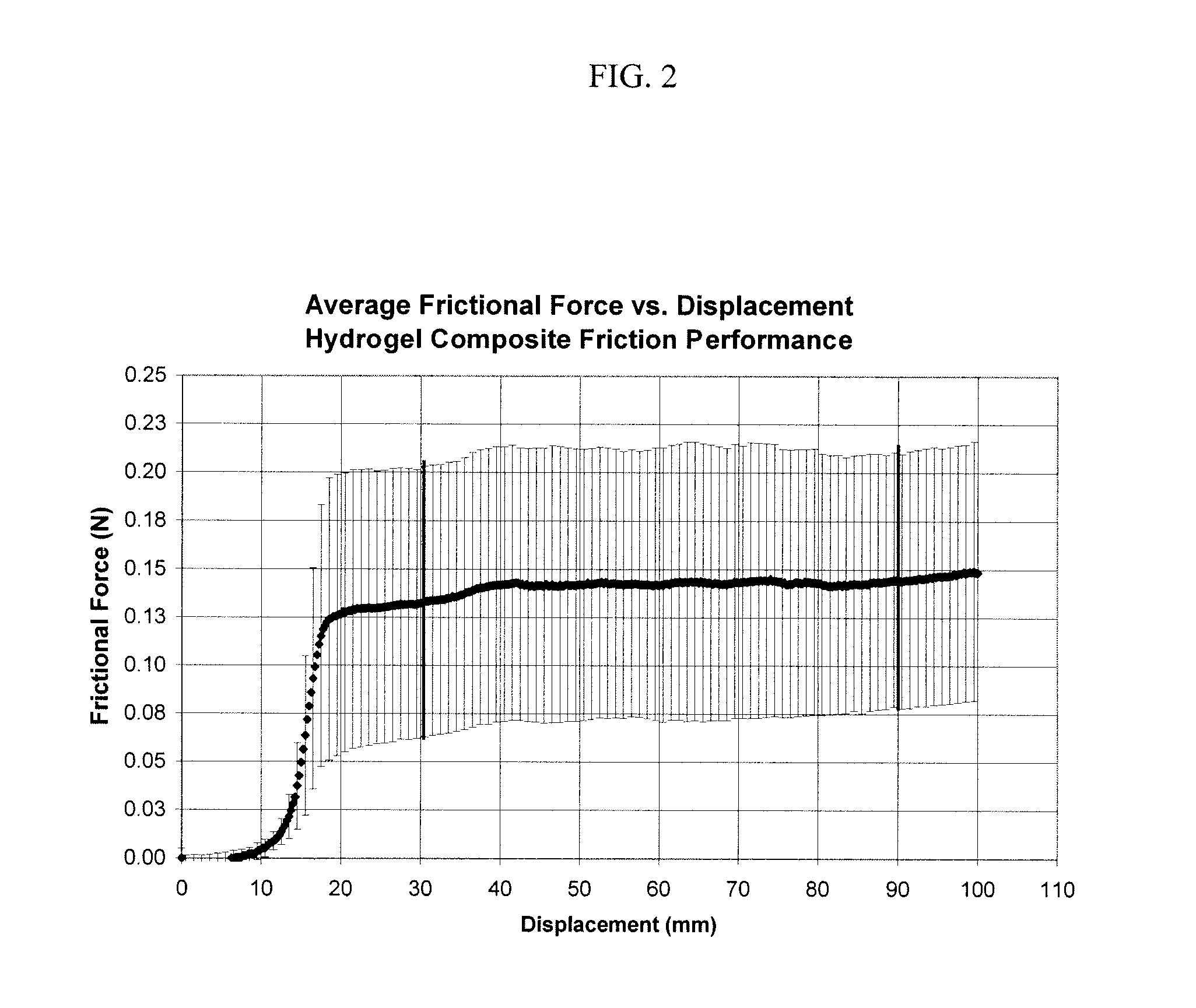Method of forming and the resulting membrane composition for surgical site preservation
a surgical site and membrane composition technology, applied in the field of forming and resulting membrane composition, can solve the problems of post-operative pain, bowel obstruction, other complications, and the near blind navigation field, and achieve the effect of reducing the occurrence of tissue adhesions
- Summary
- Abstract
- Description
- Claims
- Application Information
AI Technical Summary
Benefits of technology
Problems solved by technology
Method used
Image
Examples
examples and experiments
[0047]The following examples and experiments describe some of the properties of the preferred membrane compositions 5 described herein and are only intended to assist in explaining and illustrating certain structures, features and aspects of the membrane composition and not as limiting the scope of the invention to the precise arrangements, compositions, properties or features described.
example 1
Membrane Composition Formulation and Characterization
[0048]A preferred membrane composition 5 comprising a PVA-based hydrogel component 10 with a porous mesh filler component 20 was prepared. The mesh 20 consisted of a fifteen hundredths of a millimeter (0.15 mm) thick knit polyester fabric with medical grade radiopaque ink markings. The PVA-based hydrogel component 10, as described in more detail below, was applied to completely cover the mesh and form the membrane composition 5.
[0049]The hydrogel component 10 was created by preparing a twelve and eight tenths percent (12.8%) aqueous polymer solution of PVA and PVP at a 99:1 ratio. At an elevated temperature of approximately eighty degrees Celsius (80° C.), the warm polymer solution was transferred onto the polyester mesh with ink and then drawn over the mesh to form a uniform layer on both sides. The final preferred membrane composition 5 was approximately three tenths of a millimeter (0.3 mm) thick. A process of cyrogelation (i.e...
example 2
Static and Kinetic Coefficients of Friction of the Membrane Composition
[0053]The static and kinetic coefficients of friction for twenty-four (24) preferred membrane compositions 5 were determined according to the method provided in “ASTM D 1894-06 Standard Test Method for Static and Kinetic Coefficients of Friction of Plastic Film and Sheeting.” Briefly, an Instron (model number 3342) with a one hundred Newton (100 N) load cell was used to pull a one hundred thirty-nine and seven tenths grams (139.7 g) sled with the membrane composition 5 attached across a glass surface at a rate of one hundred fifty millimeters per minute (150 mm / min). The test was run at room temperature and moisture was maintained within the specimens throughout the test. See FIG. 2 for a graphical representation of the raw data. The static coefficient of friction was determined to be one hundred thirteen thousandths (0.113)±fifty-three thousandths (0.053). The kinetic coefficient of friction was determined to be...
PUM
| Property | Measurement | Unit |
|---|---|---|
| Length | aaaaa | aaaaa |
| Length | aaaaa | aaaaa |
| Length | aaaaa | aaaaa |
Abstract
Description
Claims
Application Information
 Login to View More
Login to View More - R&D
- Intellectual Property
- Life Sciences
- Materials
- Tech Scout
- Unparalleled Data Quality
- Higher Quality Content
- 60% Fewer Hallucinations
Browse by: Latest US Patents, China's latest patents, Technical Efficacy Thesaurus, Application Domain, Technology Topic, Popular Technical Reports.
© 2025 PatSnap. All rights reserved.Legal|Privacy policy|Modern Slavery Act Transparency Statement|Sitemap|About US| Contact US: help@patsnap.com



